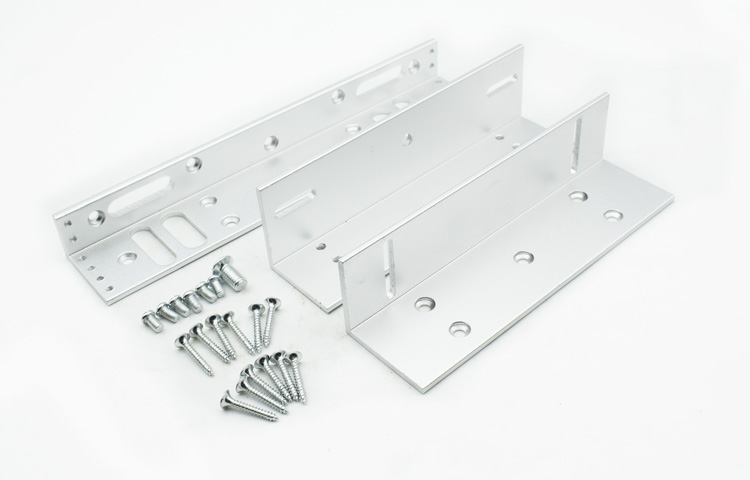Introduction
In the realm of security systems, electromagnetic locks have gained significant popularity due to their effectiveness, reliability, and ease of use. These locks utilize the power of electromagnetism to secure doors and provide an additional layer of protection for various establishments. In this comprehensive guide, we will delve into the world of electromagnetic locks, exploring their functioning, benefits, installation process, and applications.
How do Electromagnetic Locks Work?
Understanding the basic principles
Electromagnetic locks work on the principle of electromagnetism, where an electrical current flowing through a coil of wire creates a magnetic field. This magnetic field attracts a metal plate, known as an armature plate, and holds it against the electromagnet, preventing the door from being opened.

Components of an electromagnetic lock
An electromagnetic lock consists of two primary components: the electromagnet and the armature plate. The electromagnet is typically mounted on the door frame, while the armature plate is fixed to the door itself. When the lock is activated, the electromagnet generates a magnetic force that attracts the armature plate, effectively locking the door.

Operating modes
Electromagnetic locks offer two main operating modes: fail-safe and fail-secure. In the fail-safe mode, the lock is normally unlocked when power is applied. However, in the event of a power failure, the lock will automatically secure the door. Conversely, in the fail-secure mode, the lock is normally locked when power is applied and remains locked during a power outage. The selection of the operating mode depends on the specific security requirements of the establishment.

Benefits of Electromagnetic Locks
Enhanced security
One of the primary benefits of electromagnetic locks is their high level of security. These locks provide a strong physical barrier that is difficult to breach, making them an ideal choice for securing sensitive areas or high-value assets.
Quick and easy installation
Compared to traditional locks, electromagnetic locks are relatively easy to install. They do not require complex mechanical components or extensive modifications to the door frame, making them a convenient choice for retrofitting existing doors or implementing new security systems.
Remote access control
Electromagnetic locks can be integrated with access control systems, allowing for remote control and monitoring of the lock status. This feature provides convenience and flexibility, particularly in large establishments where multiple doors need to be secured and managed.
Durability and reliability
Electromagnetic locks are known for their durability and reliability. They are designed to withstand heavy use and can endure harsh environmental conditions, making them suitable for both indoor and outdoor applications.
Fire safety compliance
In many jurisdictions, electromagnetic locks are approved for use in fire-rated doors. These locks can be integrated with fire alarm systems, allowing them to automatically release in the event of a fire, ensuring compliance with fire safety regulations.
Installation Process
Assessing the door and frame
Before installing an electromagnetic lock, it is crucial to assess the door and frame to ensure they are suitable for the installation. The door should be made of solid material, such as wood or metal, and the frame should be strong and capable of supporting the weight of the lock.
Mounting the lock and armature plate
The electromagnetic lock is typically mounted on the door frame, aligning it with the armature plate fixed to the door. The lock and plate should be positioned in a way that allows for proper alignment and engagement when the door is closed.

Wiring and power supply
Electromagnetic locks require a power supply to operate. The lock should be connected to a reliable power source, such as a dedicated power supply or a power backup system. It is essential to follow the manufacturer’s instructions and adhere to electrical safety regulations during the wiring process.
Integration with access control systems
If desired, the electromagnetic lock can be integrated with an access control system for remote monitoring and control. This integration involves connecting the lock to the access control panel and configuring the necessary settings for access management.
Applications of Electromagnetic Locks
Commercial establishments
Electromagnetic locks are commonly used in commercial establishments, such as office buildings, banks, and retail stores. They provide a high level of security while allowing for convenient access control and monitoring.

Educational institutions
Schools, colleges, and universities can benefit from the use of electromagnetic locks to enhance campus security. These locks can be integrated with access control systems and can be remotely managed by security personnel.
Healthcare facilities
Hospitals, clinics, and other healthcare facilities often require strict access control measures to protect sensitive areas and ensure patient safety. Electromagnetic locks can be integrated into the overall security system to provide secure and controlled access.
Government buildings
Government buildings, including courthouses, government offices, and military installations, require robust security measures. Electromagnetic locks offer a reliable solution for securing entrances and controlling access to restricted areas.
Residential buildings
Electromagnetic locks are also used in residential buildings, providing an additional layer of security for apartment complexes, gated communities, and high-endhomes. These locks can be integrated with intercom systems or smart home devices for convenient access control.
Conclusion
Electromagnetic locks have become an integral part of modern security systems, offering enhanced security, ease of use, and remote access control. They are widely used in commercial establishments, educational institutions, healthcare facilities, government buildings, and residential buildings. Understanding the functioning, benefits, installation process, and applications of electromagnetic locks can help individuals and organizations make informed decisions when it comes to securing their premises. By harnessing the power of electromagnetism, these locks provide a reliable and effective solution for ensuring the safety and security of people and assets.
